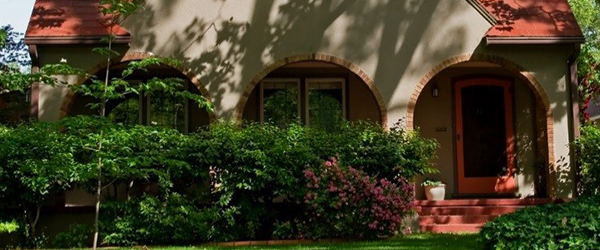Go Green at Home: Our Top 7 Tips

“Going Green” is a common phrase in today’s world. Whether it’s to combat climate change, save materials, become self-sustaining, or simply reduce one’s carbon footprint, it’s becoming easier and easier to go green.
Many go green tips focus on lifestyle and shopping decisions. But by expanding clean living to your everyday energy use and home design, you make an even bigger impact.
1. Plant trees around your home.
By planting trees on the south and west sides of your home, you can create powerful shade that reduces the work your air conditioner does in the warmer months.
When planning your tree layout, be aware about what the tree will be like when it has matured. Plant the trees close enough to your home that they’ll actually provide shade, but not so close that branches may be too close to your house or roots may grow into your pipes.
2. Start a compost pile.
While setting up an at-home composting system may take some time, the payoff is worth it. Composting reduces landfill waste and regenerates into nutrient-rich soil. Adding your composted soil to regular soil helps to prevent the soil from becoming too acidic or alkaline, making it an excellent source for plant growth. Not only will starting a compost pile or barrel reduce your use of your garbage disposal; it will also allow you to cultivate your gardens with natural fertilizers.
3. Turn off the faucet.
Most American households are equipped with one large hot water tank that provides heated water to each faucet in the home. Because of a sometimes seemingly endless supply of hot water, Americans have developed a habit of leaving the faucet running even when it’s not being used. To reduce the amount of wasted water (and wasted energy from having to heat your water tank), turn the faucet off when you’re brushing your teeth, washing dishes, or even taking a shower if you’re not actively rinsing.
4. Use dimmer switches and lower wattages.
There are plenty of fancy lightbulbs on the market that can help you have a greener home, but sometimes, the plain old-fashioned ones (with dimming capabilities) can do the trick. Dimmer switches allow you to reduce the amount of energy used and prolong the life of your light bulbs. Purchasing lower-wattage bulbs is even more effective for reducing energy use. If you haven’t already, consider switching all of your incandescent bulbs to CFL or LED bulbs.
5.Insulate your water heater.
This is a quick way to give your water heater some extra support so it doesn’t have to work as hard. You can either purchase a water heater insulation kit, or check with your utility to see if they offer them (or offer a rebate). Before doing this, be sure to look into the recommendations for your specific water heater because not all models water heaters should be insulated. The insulating blanket will likely have a fiberglass inside and you’ll likely need a helper to get it installed properly.
6. Switch the direction of your ceiling fans during cold months.
Did you know that your ceiling fan has two directions? Optimize the heat energy used in your house during the winter by setting your fan to turn clockwise. This brings the cold air, which tends to stay near the floor, up to the ceiling, forcing the naturally rising hot air down.
7. Optimize your kitchen appliance energy use with these best practices.
- Dishwasher Use:
- Pre-rinse items with burned or dried-on food ONLY.
- Don’t use the auto-dry or heated-dry option.
- If possible, manually change the water temperature.
- Refrigerator Use:
- Reduce moisture by covering all open foods and liquids.
- Manually defrost to improve efficiency.
- Oven/Stove Use:
- Watch out for yellow flames, which indicate inefficient gas usage.
- Use a toaster oven for small dishes to reduce energy use by up to half.
- Cover pots when boiling water.
With some simple adjustments to your usage habits of things you already have, and a few quick investments to switch out things you don’t, you can make your home just a bit more energy efficient. Reducing your carbon footprint does great things for the environment and it might just save you some cash, too. You can also reduce your carbon footprint at home by investing in green energy.